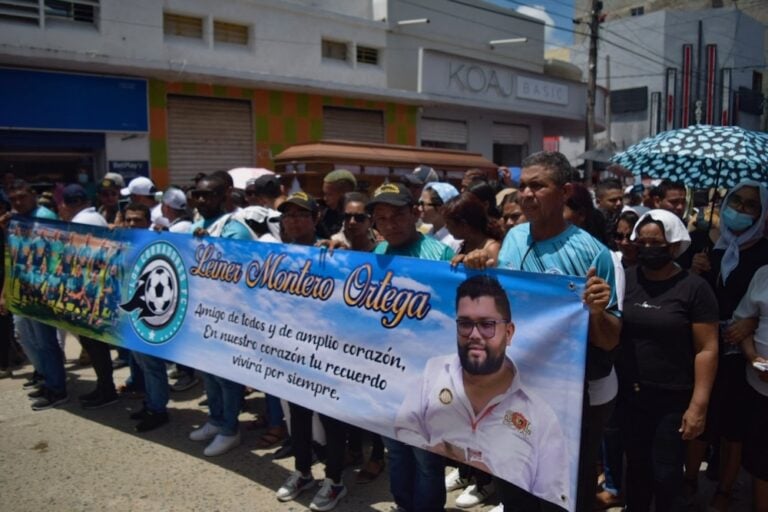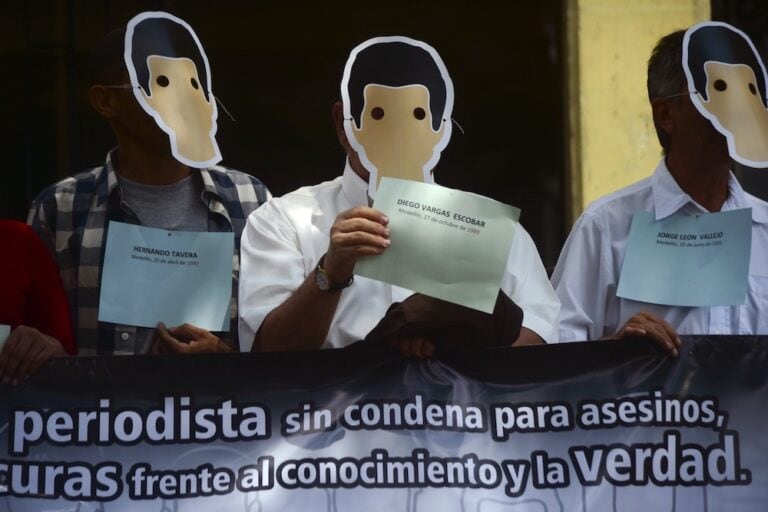(FLIP/IFEX) – The following is a 9 February 2009 FLIP press release: Press Release – Report on the state of Freedom of Press in Colombia in 2008 The Foundation for Press Freedom (La Fundación para la Libertad de Prensa, FLIP) is presenting its annual report “Threats and Stigmatization: Invisible intimidation of the press”, about the […]
(FLIP/IFEX) – The following is a 9 February 2009 FLIP press release:
Press Release – Report on the state of Freedom of Press in Colombia in 2008
The Foundation for Press Freedom (La Fundación para la Libertad de Prensa, FLIP) is presenting its annual report “Threats and Stigmatization: Invisible intimidation of the press”, about the state of freedom of the press in Colombia in 2008. The FLIP launches the report today on Colombia’s National Day of the Journalist.
The report describes the landscape for the press in Colombia in 2008. In the past year, there were 130 violations of press freedom. This represents a decrease of approximately 20 percent compared to 2007, when FLIP recorded 162 violations.
In 2008 there were no job-related murders of journalists. This is a fact worth emphasizing in a country like Colombia, where more than 130 journalists have been killed in the past 30 years. However, despite this positive result, judicial investigations of crimes committed in previous years have made very little progress.
Compared to the prior year, 2008 saw a 15 percent reduction in threats made against journalists. Despite this, threats remain the main method of intimidation utilized against journalists, and the most effective mechanism to curtail the distribution of information and prevent certain issues from becoming public knowledge. Coupled with the absolute impunity that prevails in cases of judicial investigations into threats against journalists, threats have become the silent enemy of freedom of expression.
In the report, FLIP presents figures on the functioning of the Interior Ministry’s Protection of Journalists Program in 2008, and especially emphasizes a recent ruling by the Constitutional Court – following a lawsuit filed by one of the beneficiaries of the program – about the conditions under which the state should protect journalists at risk. In short, the court ruled that the protection of a journalist at risk can not affect his or her freedom of expression.
In 2008, there were also of journalists who consider themselves to be at risk because of remarks or statements made by public officials and individuals.
Aside from direct threats and other violations of press freedom, 2008 showed another, more indirect, form of censorship: the arbitrary distribution of state advertising to serve political objectives and exert financial pressure on journalists and media. The report provides an approach to the problem and some of the proposals that are being developed to deal with it.
Another factor that may lead to indirect censorship is the restriction of access to public information. In one case in particular, the Supreme Court of Justice referred to public information and information about military matters. In a ruling that was relevant for investigative journalism, the high court said that when the army refuses to give information on the grounds of protecting national security, it should explain the way in which national security would be compromised by providing the requested information.
Download the complete report (only available in Spanish) at: http://www.flip.org.co/veralerta.php?idAlerta=346


